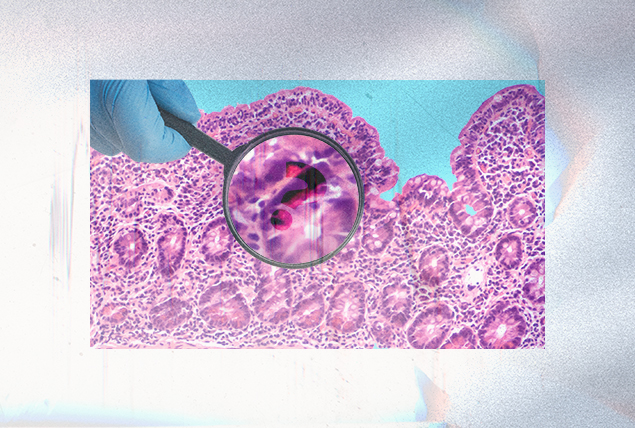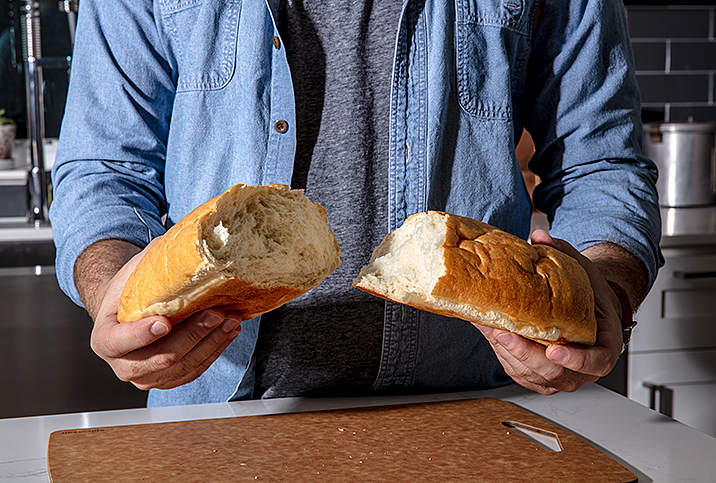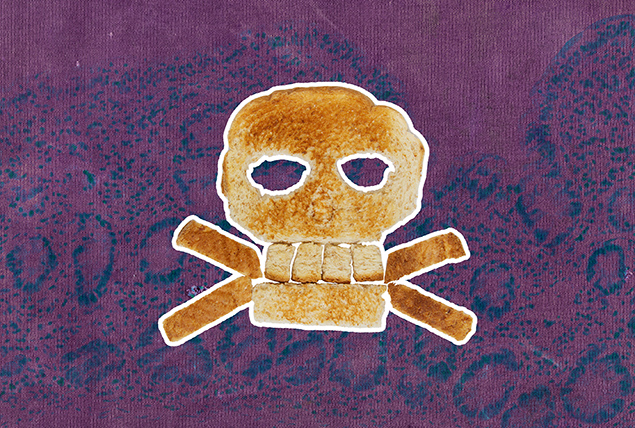Celiac Disease Is Surrounded by Uncertainty and Debunked Myths

Celiac disease is an autoimmune condition that causes the body to attack the protein gluten as if it were an undesirable foreign body. In the long term, that seriously affects the lining of the small intestine. Celiac is not an allergy to gluten and it's not something a person can control.
It affects less than 1 percent of the American population, which is still a few million people, but too many people—including those who have it and doctors of all kinds—aren't knowledgeable enough about the condition, despite the fact it has been scientifically documented since 1888.
For example: Of the potential 3 million Americans living with celiac disease, experts think anywhere from 83 percent to 97 percent are undiagnosed or misdiagnosed. That's a combination of patients and healthcare professionals not understanding the disease, and maybe even believing false information about it. Plenty of myths and misconceptions still exist about celiac disease.
It's important to understand what is—and isn't—real about celiac disease, a condition that can have a significant impact on a person's lifestyle.
Myth: Celiac disease isn't a real disease
Celiac disease is, in fact, quite real.
"Celiac disease is caused by the immune system recognizing gluten, a protein found in wheat, rye and barley, as an infection," said Liia Ramachandra, Pharm.D., the founder of EpiLynx, a manufacturer of gluten-free skincare products based in Los Angeles. "This immune response damages the lining of the small intestine."
There are plenty of reasons for the cynicism surrounding celiac disease. Symptoms may be misunderstood, and the long-term damage to the small intestine is not immediately visible to others.
This myth may be chalked up to the public's desensitization to the idea of dietary restriction as a need, not a choice.
Myth: Celiac disease causes only gastrointestinal issues
Undiagnosed or untreated CD can wreak havoc on a person's entire bodily function.
"There are some very severe symptoms of celiac disease, such as diarrhea, loss of weight, bloating, etcetera," Ramachandra explained. "But over time, many other problems may develop as a result of the body's reaction to gluten, from skin rashes and lactose intolerance to infertility, bone weakness and nerve damage."
Myth: You can outgrow celiac disease
A person is never too old to develop CD.
A person's potential change in diet has nothing to do with being a picky eater or any life stage in particular.
"Celiac disease is a lifelong condition in which you cannot eat any type of wheat, barley or rye products," according to Aniruddh Setya, M.D., a pediatric gastroenterologist with Memorial Health Network in South Florida. "You can control your symptoms or improve your health by sticking to a gluten-free diet, but you cannot have it cured. Not yet."
While the average age at diagnosis for celiac disease is 46 years old, infants can exhibit symptoms when they begin weaning and parents start introducing solid foods to their diets.
The likelihood of a celiac diagnosis does increase with age, but there are dangers unique to infants with CD because they're nonverbal.
The intensity of symptoms varies from person to person, but generally, childhood cases involve nutrient malabsorption in addition to more visible symptoms, and adult cases usually only bring the latter.
Both are serious health conditions, but a case in childhood has a high likelihood of stunting a child's growth.
Myth: Oats contain gluten
Oats do not contain gluten, but they're often around many foods that do. While oats don't scientifically contain gluten, the food production process often results in gluten contamination.
"Oats can be introduced carefully, as most oat products are tolerated," Setya explained. "However, the majority of oats have been processed in facilities that also process wheat, rye and barley, all of which do contain gluten."
This additional restriction may feel especially frustrating to people with the disease. Not only do they have to watch out for what's on their plate but also how it got there. People with lifelong celiac disease are reported to have an easier time switching to gluten-free diets, but many dietary resources are available to help anyone during this adjustment period.
Myth: Celiac disease means you are allergic to wheat
This is a myth that's far, far from the truth.
Celiac disease transcends an allergy—that isn't to say some allergies aren't also dangerous—but the hallmark of CD is long-term organ damage, not just the painful symptoms that manifest in the moment.
"They are two different entities," Setya said. "A child with a wheat allergy merely needs to avoid wheat products. Any food containing gluten, such as wheat, barley and rye, can harm the lining of the small intestine in children with celiac disease."
Myth: Celiac disease has a cure
Unfortunately, no cure exists. Much like diabetes or asthma, celiac disease can only be managed.
"Celiac disease currently has no medications or cure. The only treatment is to follow a gluten-free diet," Setya explained. "Approximately 70 percent of patients have noticeable clinical improvement within two weeks. Symptoms purely due to CD despite a gluten-free diet suggest inadvertent gluten exposure, which will need to be evaluated for by a physician."
Myth: People with celiac disease need gluten-free cosmetics
Gluten-free cosmetics aren't necessary but mindfulness is, said Setya in debunking this idea, which will probably save a person with celiac disease more than a few bucks.
"For persons with celiac disease, the presence of gluten in shampoo and cosmetics poses no risk, with the exception of products that can be easily eaten, such as lipstick or perhaps hand lotion," he said. "Topical products are safe to use since, according to research, gluten cannot be absorbed through the skin unless there is a severe and open wound."
Myth: People with celiac disease can't eat rice
Rice can be safe—even "glutinous rice."
What is glutinous rice?
"Rice is gluten-free, this is just a fact. Even sticky rice, also called 'glutinous rice,' is gluten-free, despite its name," Ramachandra explained. "In this case, the 'glutinous' term refers to the sticky nature of the rice and not the gluten protein found in wheat, barley and rye."
For sushi lovers, this treat can be on the menu, as long as the correct precautions were taken by the food preparer.
"Rice is one of the most popular gluten-free grains for people with celiac disease," Ramachandra said. "So rice is generally gluten-free unless it's mixed or processed with other products that contain gluten or is contaminated on equipment that processes gluten products."
Celiac disease is a complex topic, one that probably shouldn't be managed according to what friends or family members believe. Reserve that trust for medical professionals.
If you think you might be exhibiting symptoms of celiac disease, be sure to see a healthcare professional. Don't have a doctor you see regularly? Or maybe you want to talk to someone who specializes in nutrition? Telehealth makes that simple and almost immediately available.
Video visits have become a viable option for most people, and more physicians and nutritional professionals have added them as a service. They're a good way to see an expert quickly, as many offer same-day appointments. If follow-up is required, you have your foot in the door. Giddy telehealth is an easy-to-use online portal that provides access to hundreds of healthcare professionals whose expertise covers the full scope of medical care.


















